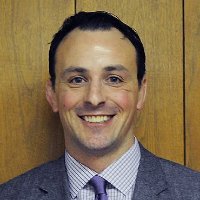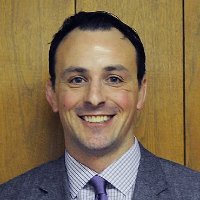 For the last several years, the ASCD has honored two educators with an Outstanding Young Educator Award. This year at the ASCD Annual Conference, we had a chance to talk with one of the recipients, Dr. Joshua Garcia. Garcia is the Deputy Superintendent of Tacoma Public Schools in Tacoma, Washington. He was a teacher, principal, assistant superintendent, and now deputy superintendent – all before the age of 40. Garcia is the youngest administrator in his district and his leadership has already brought new successes to Tacoma Public Schools. Some of his successes cited in the award:
For the last several years, the ASCD has honored two educators with an Outstanding Young Educator Award. This year at the ASCD Annual Conference, we had a chance to talk with one of the recipients, Dr. Joshua Garcia. Garcia is the Deputy Superintendent of Tacoma Public Schools in Tacoma, Washington. He was a teacher, principal, assistant superintendent, and now deputy superintendent – all before the age of 40. Garcia is the youngest administrator in his district and his leadership has already brought new successes to Tacoma Public Schools. Some of his successes cited in the award:
In his role as deputy superintendent in Federal Way Public Schools near Tacoma, Garcia prioritized the creation of a flexible learning program to meet the needs of all students by introducing International Baccalaureate and advanced placement (AP) programs at the middle and high school levels, as well as led the implementation of Web 2.0 technology tools and social media programs. To set a culture of high expectations in the school district, Garcia has also employed an “opt out” versus “opt in” strategy for AP courses, which over the course of three years has resulted in an 72 percent enrollment increase by juniors and seniors taking at least one AP class.
When we sat down with him in Chicago after he had been presented with the OYEA award, we were very interested in his view of how the learning community can work more productively together. He offered some very interesting ideas about how to transform the way we foster collaboration in education.
Josh Garcia believes that one of the major problems with the current “reform” conversation in education is that there is no clear and agreed-upon definition of “success.” So one of the first things he worked on in his district is creating what he calls a “standardization of expectations.” He is quick to note that this does not mean a standardization of methods or even of assessments. Rather, it is the idea that everyone with a stake in a student’s education (the student, teachers, administrators, parents, and the community) should all know exactly what we mean when we say “success.”
“Our problem,” Garcia says, “is that we don’t have an example of this to follow. We don’t create patterns in our society for what these ideas mean, and so we don’t really know what “college ready” or “career ready” mean, and no one down the line [fusion_builder_container hundred_percent=”yes” overflow=”visible”][fusion_builder_row][fusion_builder_column type=”1_1″ background_position=”left top” background_color=”” border_size=”” border_color=”” border_style=”solid” spacing=”yes” background_image=”” background_repeat=”no-repeat” padding=”” margin_top=”0px” margin_bottom=”0px” class=”” id=”” animation_type=”” animation_speed=”0.3″ animation_direction=”left” hide_on_mobile=”no” center_content=”no” min_height=”none”][from politicians to schools] knows either.”
Garcia has established a simple pattern in his district: “instruction + structure + relationships = student success.” And for every level and content area, the educators are collaborating to create the specific standards of learning a student must meet to move forward. These are not specifically test scores, but rather, actual learning benchmarks in that content area. If a student meets the benchmark, they can go forward. If they do not, there has to be in place meaningful ways for the student to re-engage with the material and try again. Standards in classrooms, Garcia insists, need to be shared and need to be public. When parents and students clearly understand what is expected, they will know the right questions to ask, and teachers will be able to provide necessary information and guidance. He believes this could work nationally.
As for teacher support, training and accountability, Garcia expressed a desire to provide educators with multiple levels of support. Starting with orientation and mentoring, to learning how to be a teacher who does action research in the classroom and attends (and provides) professional development specific to their needs and goals, Garcia believes the more built-in support there is, the easier it is to have a clear path for evaluation. He also suggested that districts should provide “credible options” for teachers’ professional growth. “Options with integrity,” as he calls them, would not just be monetary incentives, but ways for them to become leaders, provide PD, or move to a new level of certification.
At the center of Garcia’s firm belief that a collaborative learning environment is not only possible, but available, is his insistence that we must engage constantly in “public conversations” about these issues. Teachers and administrators must be willing to hear each other and engage in a dynamic collaboration without fear of recrimination or backlash. Building that trust is one of his number one priorities — and is especially challenging in a district that only two years ago faced a very divisive strike situation. Keeping these conversations public also ensures accountability, not just for teachers, but also administration. For example, if the entire learning community knows that the district has said it will pay for the students’ AP/IB assessment costs (as they do in his district), then those commitments are much more likely to be kept. Public communication and collaboration is a primary key to fostering excellence throughout the learning community, according to Garcia.
When asked to name – in one word only – the one thing he would change in education if he could, he responded, “clarity.” He clearly has a passion for the idea that agreeing on clear, identifiable standards for expectations would resolve much of the policy conflict and the blocks to collaboration that currently exist in the national education conversation. Defining ideas like “student success” and “curriculum” would go a long way towards clarifying the very issues we have yet to truly understand. Even standardized classroom expectations would be something that could clearly aid students but yet is never discussed. Students are expected often just to guess at what is expected of them in one classroom, try to adjust themselves to that, and then 40 minutes later re-adjust to an entirely different environment. And they have to do that six or seven times a day. Taking that kind of pressure off both educators and students would go a long way towards more buy-in from all sides.
Garcia was asked whether he thought CCSS would resolve any of the current conflicts and issues in terms of standardization. He shook his head in the negative and expressed his worry that “assessment will become the target, and so people will continue to disagree.” He identified one of the main problems many educators have already experienced with CCSS: the imbalance of work load districts and schools are putting on only two content areas (math and English) versus all the rest of the content students must learn. He believes that standardizing expectations should require “artistry” to get there. Multiple measures (including assessments) must be available – it’s not the methods that must be standardized, but a clearly defined goal.
In the end, Garcia told us that he believes the best in education is upon us. “This generation of educators is more professional than ever, students know more than they’ve ever known, and learning resources are at our fingertips more than ever before.” Therefore, he insists, there is no reason why we can’t push through the old barriers to excellence into new and public conversations about what we expect for ourselves. Creating a cooperative learning environment means everyone has to be willing to participate and hear and learn. His goal is to introduce true innovation in education policy by engaging his educators this way.
Not having heard many administrators at his level speak this way, we asked whether he is comfortable with the kind of backlash he could face from traditionalists and reformers outside of education who might not like his new ideas. “I don’t back down from controversy,” he assured us. We are fairly certain that is one of the clear reasons why he won this prestigious award.[/fusion_builder_column][/fusion_builder_row][/fusion_builder_container]



